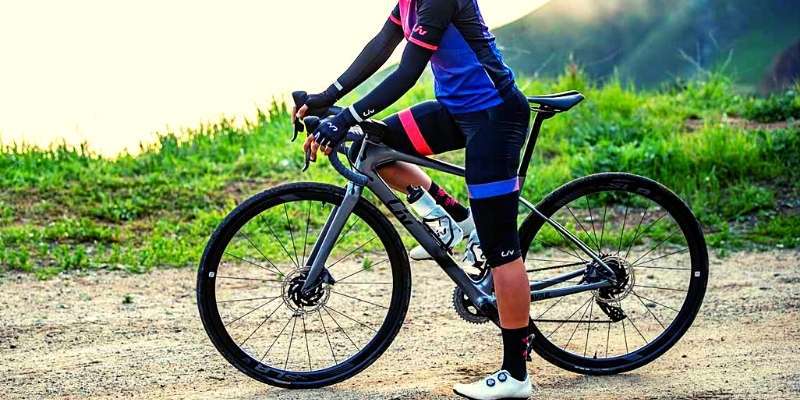
Most bike riders want to know if their mountain bikes can be ridden on the street, even if they primarily bought to ride on bike trails.
This is a perfectly valid issue, whether they want to ride their bikes around the block or simply on the street to get to the trail. Moreover, I am here to deal with the issue.
A mountain bike can be ridden on the street. Although mountain bikes are generally meant for bike trails, they will not perform entirely on roads. However, you can certainly ride a mountain bike on the road.
If all you require is a yes or no answer, the text above should suffice. If you’re going to be riding on the street, there are a few more considerations. Please continue reading if you’re interested in learning more because I’m going to lay down all I’ve learned so far!
How safe is it to ride my mountain bike on the road?
Every bike is a bike. The point is that no matter what type of bicycle you have, it is always supposed to be ridden. It does not matter if it is a road bike, mountain bike, hybrid, or something else. As a result, mountain bikes are perfectly acceptable for riding to work.
As with any bike, mountain bikes are designed to be the best for specific types of riding, such as climbing mountains and following bike roads.
It’s like shoes. Certain styles are better suited to particular occasions when it comes to footwear. Basketball shoes are excellent for playing ball, running shoes are great for jogging, and walking shoes are the greatest for walking. But you can wear any style of shoes to do anything, and they’ll still get the job done.
You will have to ride your MTB on the street to get from point A to point B. Although it has a few drawbacks, it will do the job.
Why Take a Mountain Bike on the Road?
Potholes and impediments litter today’s roads, making them far from a smooth ride. The faults of current roads are better handled by mountain bikes. If you’re not riding a hardtail mountain bike, you can enjoy a much more comfortable ride with these bikes. A mountain bike can be used on dirt roads and pavement alternatives, and riding a mountain bike on the road is a no-brainer.
Sitting in traffic in a car riding a mountain bike seems incredibly appealing. Consider how much exercise you’ll get as a result.
The fact that a mountain bike can handle curbs and other road hazards so well is a compelling argument in favor of riding a mountain bike on public roads. Along the way, you might even have a chance to do a little jumping.
If your only bike is an XC bike and you’d like to try road biking, getting a second bike would be a waste.
Is it challenging to ride a mountain bike on a public road?
The benefits of riding a mountain bike on the road have been discussed, but what about the disadvantages? These are the expected downsides of using a mountain bike on the road:
Mountain bike tyres are less maneuverable due to their larger and more resistant treads. Therefore, it takes a little more energy to drive the tyres. Remember, you can swap the wheels and tyres between the two sets of wheels if you’d like to.
To withstand the stresses of jumps and bumps, all-mountain bikes (hybrid, xc, and trail) are heavier. Mountain bikes’ frames are made heavier and more robust to cope with additional loads on the frame, but this added weight makes climbing hills a little more complicated.
The suspension on mountain bikes and the brakes on road bikes are more robust than those on mountain bikes. The additional weight makes climbing hills more difficult. Yet one of its most appealing features is the smoothness of complete suspension mountain bikes.
So, as you can see, a heavier bike with more sturdiness adds to the difficulty of the ride. However, the extra suspension makes riding over bumpy pavement a lot nicer, and you can manage any terrain at a moment’s notice.
Riding on the road may cause damage to your bike.
No, that’s the short answer. Your mountain bike will not be damaged by riding on the road. There are, however, other factors to consider.
Wear and tear on the bike can be seen as “intentional harm”; thus, riding it on the road will ruin it. It is specifically designed for the type of terrain that trails offer; therefore, the tyres of a mountain bike are designed explicitly for that. When used on other surfaces (such as asphalt or concrete), they will wear out faster! The result is that you’ll need to replace your tyres more frequently than usual.
In addition, “damage reduction” needs to be considered. You’re likely to brake hard and go over or around things whenever you ride a trail. Brakes, transmissions, and suspensions are put under a lot of stress. On the other hand, the surface and riding scenarios are far smoother when riding on a road, reducing wear and tear on such parts! Hence, riding your mountain bike on the street will extend the lifespan of your brakes, gears, and shocks.
What are road-ready mountain bike models available?
While any mountain bike may be used on the road, you can do a few things to improve the experience.
In the next section, I address the obvious issue of tires. The tires make a tremendous impact. It is common for road tires to be designed for low-resistance racing, but they have absolutely no off-road traction. You can, however, put on your road tires if you are going out for the day for pavement racing.
The next item you dial in is the suspension. Road bikes have nearly zero suspension travel because vertical movement on shocks takes away from forwarding momentum. If you acquire a mountain bike with a suspension lockout, you can lock off suspension travel, so it operates like a bike with no suspension (as in road bike) (as in road bike). I’d use a hardtail bike-style rear suspension lockout and leave the front suspension with 3-4 inches of travel to accommodate road irregularities like potholes.
What are the finest pavement tires for a mountain bike?
While the knobby tires that come with your mountain bike are great for trail riding, they have more rolling resistance and can wear out quickly when used on the road.
Ideally, you should acquire a spare set of wheels with road tires or tires similar to road tires, and you can replace them as needed. Put on your trailer tires if you are hitting the trails. Change your tires for a more comfortable ride when riding on smooth pavement.
There are numerous configurations to choose from for mountain bikes, so finding a solution to a problem like this is typically relatively simple. If you’re wondering the differences, check my article on cross country bikes vs trail bikes to determine which one is closer to your needs.
What road-ready mountain bike should I get?
In my opinion, an excellent all-around mountain bike will handle decent trails, normal jumps, dirt roads, and pavement. Purchase an XC mountain bike with rear suspension lockout, then add a set of road tires to it.
Keep it as-is if you’re trail riding. When riding on dirt roads or other rough terrains, you can lock out the rear suspension to turn your bike into a hardtail. If you are going to ride on the road, you should leave the lockout in place, but the road tires are optional.
If you’ve read this and wondered if electric bikes are used on the road, that’s easy. In reality, there are several excellent electric bikes in use, and sometimes it is because the rider is unable to tolerate the effort levels of a bike and yet want to enjoy traveling around on a bike. Because of the electric motors, these bikes are subject to different helmet requirements than traditional mountain bikes, so keep that in mind when riding one.
What are the main differences between a road bike and a mountain bike?
The mountain bike can be used on and off-road, unlike other types of bicycles. Its strength comes from its ability to handle different terrains well. Typically, cross-country bikes are used on mild trails, gravel roads, and paved highways. Trail bikes are used on mild to wild trails.
Mountain bike tyres are often designed for traction in less than ideal conditions but at the cost of increased rolling resistance. This is not an issue in terms of off-road use and is greatly appreciated.
Road bikes are built on be on-road exclusively and usually fairly smooth roads. They are built to be used on the pavement, and you can see this in the tires that it utilizes. The low rolling resistance of road bike tires makes them ideal for city riding. Consequently, road bike tires lack the grip to be used on trails.
While there are numerous smooth roads, a significant majority of roads have potholes, uneven portions, and cracked pavement. So on the topic “Can you ride mountain bikes on the road?”, it becomes evident that a mountain bike is desired to use on the road. When you stop to think about it, would you instead bounce off a pothole and maybe lose control of your bike, or would you rather have your bike’s suspension absorb the impact? I’d rather be riding a mountain bike and having it absorb the impact than having my muscles hurt, and I can also keep control on a mountain bike.
It is possible to choose from various mountain bikes, and choosing the appropriate bike can provide you with the right combination of usability and abilities. Following the section about road-ready mountain bikes, I’ll go into more detail about this topic.
It’s important to remember that hardtail mountain bikes are excellent for putting the power down the road, but just like a road bike, they will also make you aware of every flaw in the road. Mountain bikes with full suspension take the hit so you won’t feel bad roads nearly as much.
For further information, visit my post on Mountain Bikes vs Road Bikes.
Conclusion
It’s safe to ride that mountain bikes can be used on road streets just like road bikes, and in some instances, they may even be better.
Don’t forget to be careful at intersections. On trails, you are in control, but there is danger from cars on the roads under normal circumstances, and when you text drivers, it becomes extremely dangerous. Take every precaution and wear all the safety gear you need when you’re near a road.






